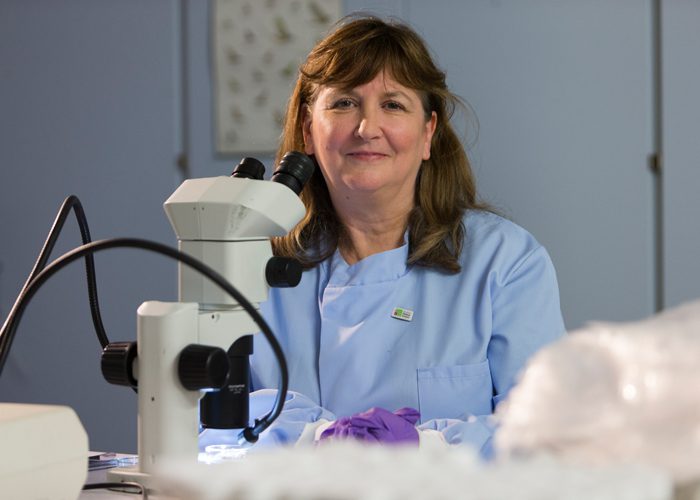NEW advances in single cell DNA profiling, which could make it possible to identify individuals from even the smallest traces, may be used in an innovative criminal justice project.
The project, supported by experts at The James Hutton Institute and led by the Earlham Institute, is set to explore whether the justice system could use these data to create DNA profiles from complex crime scene evidence.
The project – Single-cell and single molecule analysis for DNA identification (SCAnDi) – has been awarded nearly £625,000 to work with experts across the criminal justice system.
Dr Iain Macaulay, Technical Development Group Leader at the Earlham Institute, is leading the SCAnDi project, with the Hutton leading the advisory group and providing analytics expertise. They will work alongside experts at the University of Edinburgh, University of Portsmouth, University of Derby, Liverpool John Moores University, and Edge Hill University.
Co-investigator Dr Lorna Dawson, Head of the Soil Forensics Group at the Hutton, will be working with potential end users in the criminal justice system (CJS) – including forensic practitioners, service providers and legal experts – to identify their needs, timeframes and challenges.
“This innovative project could substantially enhance the reliability of use of human DNA in criminal investigations and evidence in court,” says Dr Dawson. “It will also pave the way for the safe use of non-human DNA in a wide range of criminal and environmental applications.
“Pivotal to its success is its co-construction with a wide range of stakeholders, advising on its safe development and future use, in the UK and globally. We are honoured to manage the engagement with the interested wider stakeholder community within the CJS.”
Humans shed cells wherever they go. These cells often tell a story. For example, depending on whether an individual is bleeding on, or touching a surface they will leave behind two different types of cell.
Each of these cells can contain DNA. This is already used as evidence to identify an individual – or rule them out – in criminal cases.
However, identification becomes much more difficult when cells from multiple individuals are mixed together. Around 45% of forensic samples within the UK criminal justice system are believed to contain human DNA from two or more individuals.
If there is DNA from more than one person present, traditional analytical techniques may miss smaller traces from certain individuals. Investigations potentially lose information about the cell type or origin of the cell. Mixed samples can also considerably reduce the success of searches against DNA databases.
This means it can be more difficult to piece together a clear story of how an event took place, or to ensure justice is delivered for people involved in a crime.
Single-cell analysis allows genomes to be constructed from much smaller amounts of genetic material. It is often used to explore differences between individual cells in mixed samples. For example, it has been used in cancer research to identify different genetic mutations between cells in different parts of the same tumour.
These approaches could allow DNA profiles to be constructed from cells found at the scene of a crime. These profiles can also be linked with images of the cell, which could provide valuable contextual information to forensic experts – particularly where there are mixed samples.
Dr Iain Macaulay, who has more than a decade’s experience in establishing and applying single-cell genomic approaches, says, “Knowing the genetic origin of individual cells in a mixture – and perhaps linking that with images of the cells – could give us new information about how, when, and why this DNA ended up at a crime scene.”
He explained the project will explore not only whether single-cell approaches would be valuable in forensics, but also whether they would be practical. Engagement with the whole criminal justice system will be critical in deciding if – and how – the technology could be applied.
“We’ll be working with people in different parts of the justice system to explore the practicalities of using this technique, and whether these approaches would fit into the way they work,” he said.
A key aspect of the project will be establishing a network of forensic practitioners, commercial suppliers, researchers, and investigative and legal representatives. The SCAnDi network will meet regularly to ensure the technical deliveries of the research remain aligned with the needs of the Criminal Justice Systems across the UK and beyond.
